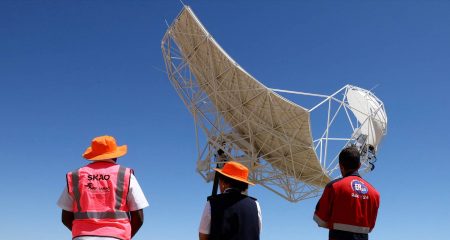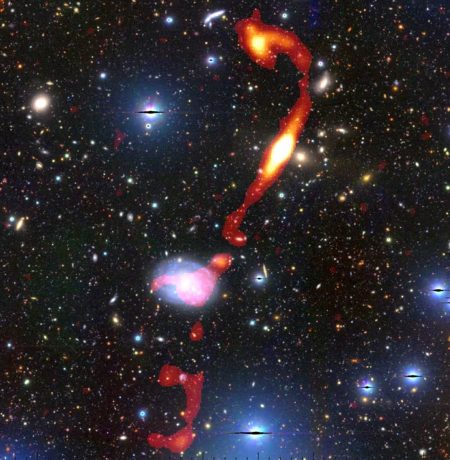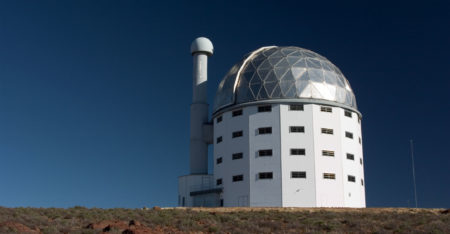The 64th and final foundation for the MeerKAT telescope antenna has been laid at the Square Kilometre Array (SKA) site outside Carnarvon in the Karoo, the SKA Organisation has announced.
Almost to 5 000 cubic metres of concrete and more than 570 tons of steel were used to construct the foundations, a project that has taken nine months.
MeerKAT is the South African precursor to the SKA telescope, the world’s largest radio telescope, to be built in Africa and Australia.
“The foundations were constructed to stringent specifications to ensure that the antennas will be exceptionally stable,” says Tracy Cheetham, GM for infrastructure and site operations at SKA South Africa, in a statement. “Even at wind gusts of up to 69km/h, scientists must be able to point the dishes at distant celestial objects in an exact manner, and the antennas must be able to survive wind speeds of up to 144km/h.”
Each foundation consists of eight steel-reinforced concrete piles at depths of between 5m and 10 m, depending on the local soil conditions. A square slab of concrete (5,2mx5,2m and 1,25 m thick) rests on top of the piles to add further stability. The 32 “holding down” bolts are pre-assembled in a circle to form a steel ring cage, or so-called “bird’s nest”, into which the concrete is cast.
All other MeerKAT infrastructure should be complete by the end of March. “We are on the last leg now,” said Cheetham. Finishing touches are underway in the Karoo array processing building and the power facility. The processing building is a specialised underground bunker protected from radio frequency interference and will house all the data processing racks and the power and back-up equipment required for MeerKAT.
“The primary focus for the next two months will be on verifying that all infrastructure functions according to the required specifications. Testing involves cold and hot commissioning,” says Cheetham. “During cold commissioning, the power is connected without switching on the equipment. During hot commissioning, the machines are turned on and tested for a period of time.”
She says the ducting for fibre-optic cable has been completed, so all that is left now is for the optic fibre contractor, Plessey, to pull through and connect the cable.
Each MeerKAT antenna will be 19,5m high, while each reflector (or dish) will be 13,5mx16m. Each complete antenna (base, pedestal and dish) will weigh 42 tons.
The placement of the antennas is determined by the science objectives of the telescope. Forty-eight foundations are in the core area, which is about 1km in diameter, while the longest distance between any two antennas (the so-called baseline) is 8km.
MeerKAT will be the most sensitive radio telescope in the southern hemisphere until the SKA comes online. Once all 64 antennas are operational, the instrument will be sensitive enough to pick up a cell phone signal from Saturn.
Leading radio astronomy teams around the globe have already signed up to use the instrument as soon as it is ready. The 64 MeerKAT antennas will later also become part of the SKA telescope. — (c) 2014 NewsCentral Media
- All images courtesy of SKA South Africa




